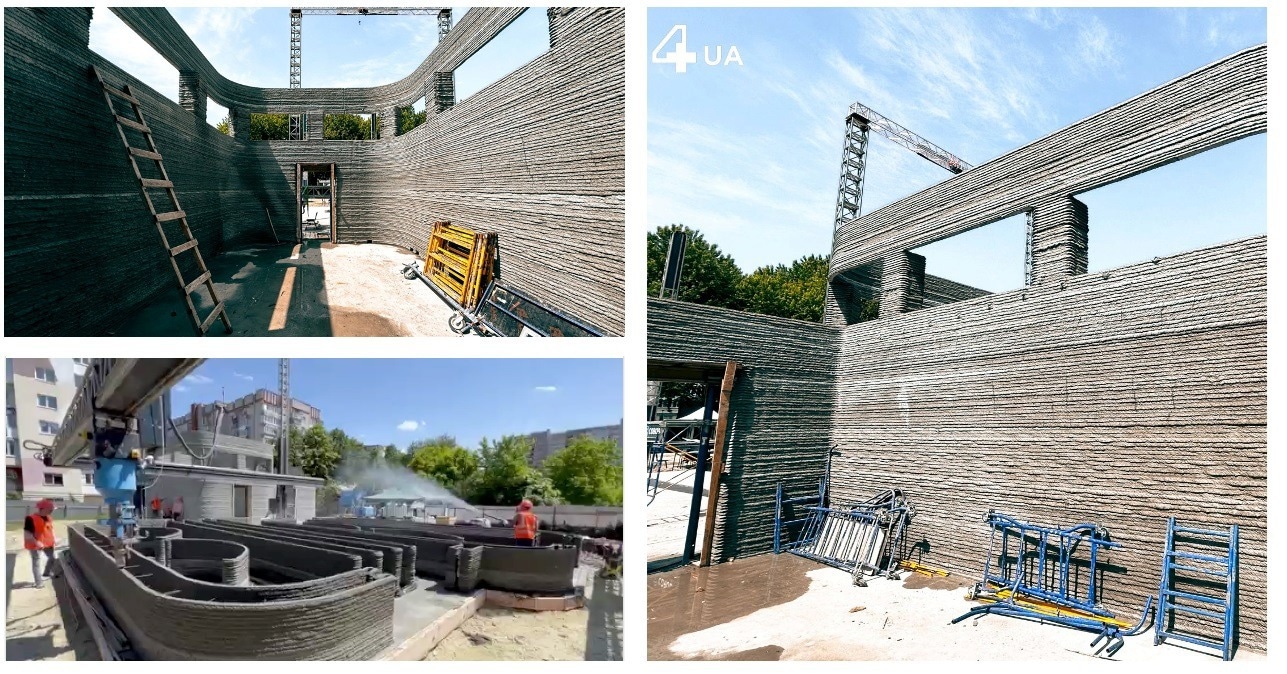Despite the ongoing humanitarian crisis in Ukraine, the government has taken a step towards improving education by partnering with the humanitarian fund Team4UA, founded by Jean-Christophe Bonis, operating on the ground in Ukraine to build schools. The new initiative aims to address the severe shortage of schools in Ukraine's conflict-affected areas and provide much-needed educational opportunities for children.

Image Credit: Team4UA
In Lviv, the second stage of constructing the school's educational building has begun using 3D printing technology. According to preliminary calculations, this will be the largest one-story educational facility in the world, built with an on-site 3D construction printer. Construction will last about five weeks and be completed at the beginning of June 2023. The new additional school building is expected to be opened for 100 students in January 2024.
According to the Ministry of Education and Science of Ukraine, over two thousand schools in Ukraine were damaged in the war, and 330 were destroyed due to the full-scale invasion. The need for educational facilities and resources for millions of children has significantly dropped school attendance and achievement. To combat this problem, the Ukrainian government has teamed up with several 3D printing companies to create innovative and cost-effective solutions for building new schools.
This innovative approach to building and maintaining schools aims to alleviate the ongoing crisis's effects on Ukraine's education system. With 3D printing technology, the construction process is expected to become faster and more affordable while maintaining high safety and quality standards.
"The school construction project, based on 3D printing technology, is aimed at providing access to education to children affected by the full-scale war in Ukraine and creating an inclusive space for internally displaced children in Lviv. Ruined schools and other educational institutions deprive the young generation of the opportunity to get a quality education, which can negatively impact their and the state's future. Innovative solutions will help to overcome this problem now, many times faster and more efficiently," says the founder and chairman of the humanitarian fund "Team4UA", a French tech entrepreneur Jean-Christophe Bonis.
This partnership between the government and Team 4UA is helping to restore hope for the future of education in Ukraine and providing a tangible solution for addressing the current humanitarian crisis.
The technology-providing partners are the Danish 3D construction company COBOD and the Danish construction company 3DCP Group, which will lead the printer's operations on the ground. CEMARK, a CRH company, provides cement for the 3D printing concrete mix. The architectural concept of the project was developed by the architecture and interior design studio Balbek Bureau, founded by Slava Balbek and Borys Dorogov. Ars Longa architectural bureau developed the engineering concept of the project.